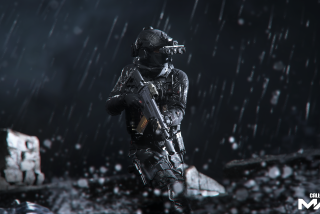Thinking through war
- Share via
IT ALL STARTED four years ago with a quote from Lt. Gen. William Wallace, then the Army’s ground commander in Iraq. “The enemy we’re fighting is a bit different than the one we war-gamed against because of these paramilitary forces,” he said about a week into the 2003 invasion. “We knew they were here, but we did not know how they would fight.”
Strategic war games used to be simple. Soldiers, defense consultants and others divvied up into Blue (allied) and Red (enemy) teams and then faced off in a series of moves roughly resembling chess. The point wasn’t to predict the outcomes of future battles -- though that sometimes happened -- but to sort out how policies, tactics and weapons might perform in combat. A roll of the dice set a team’s odds. Complicated mathematical formulas determined the outcome. And that worked pretty well up through the Cold War.
Today, dice seldom get rolled. In the wake of 9/11, Afghanistan and Iraq, war games have had to evolve to remain relevant. Instead of a monolithic enemy, there are often several Red teams, fighting against each other as well as the Blue team. This complicates things for Red team players like me, but frankly, it’s a fascinating way to make a living.
It’s not just the Red teams that are changing; so is the definition of victory.
The outcome of many games is determined by a new addition, the Green team. Green represents the civilian population, the media and the international community -- once bystanders, now the ultimate arbitrators. If Red or Blue kills civilians in a manner considered unnecessary in the process of winning a battle, for instance, it may lose Green team support, thus losing the war or at least the campaign.
Green team civilians might be divided into religious or ethnic segments that mirror the nation in the scenario. They might ally with Red or Blue as the game progresses. If one or more Green factions and the media (American public opinion) turn against Red or Blue, it does not matter how well their military forces do in combat.
Welcome to the real world.
Every game design is different, but the general process goes like this: The players -- a dozen or more on each team is best -- are briefed on the scenario. Then each team fills out a sheet explaining its moves -- including objectives, propaganda/public affairs plans, military actions and whatever deception plan may be in play. Green players, being independent actors, each fill out a separate sheet.
Moves are evaluated by a computer or a White (umpire) team that decides the outcome. At the start of each subsequent move, the White team members brief everyone on what they would have learned in the real world: the results of battles, how the enemy behaved and how the results were viewed by the world media.
The game might involve three or four moves and take a week to play. The time frame represented in a game varies; in a game simulating the surge in Iraq, for instance, each move might represent six weeks.
At the end, the teams debrief each other. The Green civilians reveal how they would tilt, and the media members explain how they would respond. In many cases, the actual military outcome becomes secondary -- a bitter pill for the armed forces to swallow, but the way of the world since the conflict in Somalia.
The objectives vary. Some games examine new concepts, trying to find potential weaknesses. Others test real war plans. War games particularly are good at identifying potential gaps in planning or revealing faulty assumptions.
All of that puts a premium on cultural awareness. In the old days, a Red player needed only a reasonable knowledge of stodgy Soviet, North Korean or Iraqi tactics. Spontaneous action and adaptability were discouraged. Today, knowledge of conventional tactics is less important than understanding the enemies’ cultures and predicting how they will react and adapt. Many of our current real-world opponents, for instance, behave more like street gangs than conventional armies.
The ideal Red player is a young, culturally aware former member of the group being portrayed. Once, I needed a Red team commander for a game in which we were replicating a drug-trafficking scenario. I chose a young private who had been a street gang member, and he was one of the best Red team members I ever encountered.
But most Defense Department war games are secret, and the talent pool is limited. Organizers have to fall back on retired military guys like me and academics who can get security clearances. What our future Red teams need are dedicated young expatriates or second-generation emigres from the Middle East, Latin America and Central and Southeast Asia. We of the old Red team guard can train them, but our time is passing.
Those of us who design and play war games are sometimes hard-pressed to explain to military brass and civilian officials how and why war games have changed. The complexity of the scenarios can make anyone’s head hurt. But their heads already hurt from the reality of Iraq. Sometimes I yearn for the days when “Battleship” somewhat reflected the problems of real war.
More to Read
The biggest entertainment stories
Get our big stories about Hollywood, film, television, music, arts, culture and more right in your inbox as soon as they publish.
You may occasionally receive promotional content from the Los Angeles Times.










